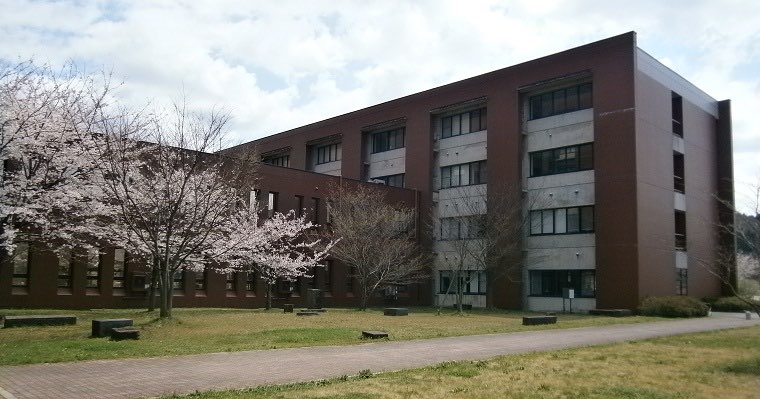
金沢解析セミナー
Kanazawa Analysis Seminar

Kanazawa Analysis Seminar
The simulation of contact problems (such as physical objects with collisions) usually leads to non-smooth dynamical systems, which can be treated analytically with the theory of differential inclusions (set-valued ODEs). In this talk, we will introduce to the general theory of differential inclusions on uniformly prox-regular sets, which is in particular applicable to overdamped particle systems with volume exclusion. We will outline the classical existence and uniqueness theory which relies on concepts from variational analysis such as scalarly upper semicontinuity, metric calmness and hypomonotonicity.
The theoretical foundation allows us to motivate a new approach for the numerical analysis of time-stepping methods for differential inclusions. Our main result is the first convergence proof of NVIDIA’s position based dynamics method (PBD), which is used in numerous movies, computer games and industrial applications. Unlike most other time-stepping methods for differential inclusions, PBD is an explicit method but with excellent numerical stability. These properties make PBD an attractive choice for the simulation of large-scale particle systems like those arising in mathematical biology.
The first part is roughly based on “Adly, S., Nacry, F., Thibault, L.: Discontinuous sweeping process with prox-regular sets” and the second part presents our new results in collaboration with Sara Merino Aceituno (University Vienna).
The seminar will be held jointly with
信州微分方程式セミナー http://math.shinshu-u.ac.jp/~analysis/index.html との共催でセミナーを開催します。
本講演では,時間依存領域におけるナビエ・ストークス方程式の時間周期的弱解の存在について言及する.
時間依存領域における同方程式の境界値問題は,森本(1971),井上-脇本(1977),宮川-寺本(1982),近年ではFarwig-津田(2022)など数多くの研究がある.一方,時間周期解の研究についても,Serrin(1959),Yudovic(1960),Kaniel-Shinbrot(1967)を始めとして大変多くの研究がある.時間周期解の存在を保証する為には,対流項の制御が重要になるが,時間依存領域において宮川-寺本(1982)では,境界値の勾配のL^2ノルムの大きさに制限を加えることにより時間周期解の存在を保証している.
そこで本講演では,宮川-寺本(1982)における境界値の大きさに対する条件を緩和することを目的とする.このとき,時間依存する領域上で小薗-柳澤(2009)で用いられたHelmholtz-Weyl分解を行うことが重要となるが,その際に,分解における調和ベクトル場やベクトルポテンシャルの領域依存性について,藤原-小澤(1978)や小薗-牛越(2013)の手法を土台に解析を行う.
なお本講演は,大阪大学の岡部考宏氏,横浜国立大学卒の菅野晴瑠氏との共同研究に基づく.
基本解近似解法(代用電荷法)はLaplace方程式やHelmholtz方程式などの定常な場を記述する偏微分方程式のの数値解析手法として成功をおさめ、また理論的解析もよく進んでいる。その一方で、拡散方程式や波動方程式などの非定常な偏微分方程式への適用例は多くはなく、また様々な問題点も報告されている。特に、拡散方程式についてはNaiveな適用を行った場合、時間間隔を短くした際に数値的不安定性が現れる。また、異常拡散方程式に適用した場合には、時間刻み幅に対する誤差の減少が時間微分階数(分数次)に依存するという現象が生じる。
本講演では、拡散および異常拡散方程式への基本解近似解法の適用において、時間方向についてNaiveな方法ではなく、畳み込み積分を用いた表現を考え、これに対しLubichが開発した Convolution Quadrature Method を適用する手法を提案する。提案手法の有効性について数値実験を通して議論する。
All microscopic evolutionary laws for physical systems - Newtonian mechanics, quantum mechanics, quantum field theory, etc. - are Hamiltonian systems, and therefore reversible in time; a video of the system could be played backward, and the result would still be a reasonable video. This is in blatant contrast with daily experience, in which heat flows from hot to cold but not the other way around, in which ice cream melts but does not spontaneously freeze, and in which life progresses clearly in one direction only. Dialy life has a clear arrow of time, and for many processes the corresponding `backward’ process never happens.
This contrast is Loschmidt’s paradox: if all the microscopic laws of the world are time-reversible, then how is it possible that many processes around us are not? More mathematically: how does the time-reversibility get `lost’ in the passage from the microscopic laws of quantum mechanics to macroscopic equations such as the heat equation?
In this talk, on joint work with Alexander Mielke and Johannes Zimmer, I want to explain our recent contribution to this question. Mathematically, we take a Hamiltonian system, do some ‘coarse-graining’ and then prove that the result is a GENERIC system.
The acronym GENERIC (Generalised Equation for Non-Equilibrium Reversible-Irreversible Coupling) refers to a class of evolution equations that combines reversible and irreversible effects into a single framework. Many equations describing real-world systems have been shown to be of this form, and by construction every Hamiltonian system and every gradient flow are also GENERIC systems.
Our contribution gives a rigorous resolution of Loschmidt’s paradox in a particular setup, and thus gives some insight in how irreversibility may arise from reversibility.
2013年4月,金沢大学の偏微分方程式研究者有志が集まり本セミナーを企画しました。各回の話題は,偏微分方程式の理論的な側面を中心に,セミナー幹事の関心に従い大らかに選択しています。参加者がセミナーを十分楽しみ,勉強し,新しい発見を得られるように,各回の最初の20分から30分程度,講演者の方にはその話題への導入となるような解説をお願いしています。ご関心がある方はどなたでもご自由にご参加ください。 どうぞよろしくお願いいたします。
Patrick van Meurs・大塚 浩史・小俣 正朗・蚊戸 宣幸・木村 正人・榊原 航也・Thomas Geert De Jong・野津 裕史・Norbert Pozar・Julius Fergy Tiongson Rabago
npozar (at) se.kanazawa-u.ac.jp